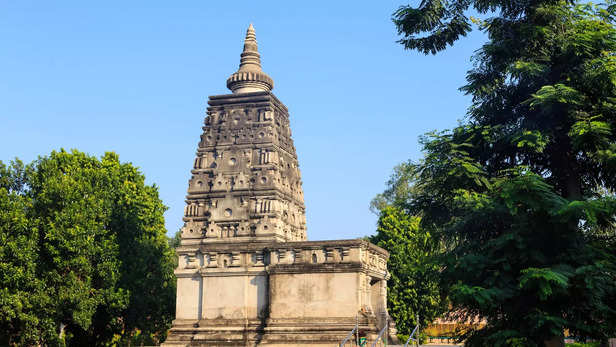Buddhism as a Cultural Ambassador
Soft power is the power to affect others by influencing culture, values, and ideology instead of coercion or violence. Buddhism has been India's cultural emissary for millennia, disseminating peace, wisdom, and ethics in the East. When Buddhist monks and scholars took Buddhist teachings out of India, they didn’t just introduce a new religion—they brought Indian art, literature, and philosophy along with them.
1. The Spread of Buddhism and Its Legacy
Buddhism flourished in India with royal patronage by rulers like Emperor Ashoka, who actively promoted the faith across Asia. His missionary work took Buddhist monks as far afield as Sri Lanka, Myanmar, and China.Buddhism developed over time under various cultural conditions—Theravāda in Southeast Asia, Mahāyāna in China and Japan, and Vajrayāna in Tibet—but never lost its distinctly Indian roots.

Bodhgaya
( Image credit : Pexels )
To this day, Indian Buddhist heritage sites like Bodh Gaya, Sarnath, and Nalanda are still sacred points of pilgrimage for devotees throughout the East. States such as Thailand, Japan, and Sri Lanka are actively participating in the renovation and preservation of these locations and reinforcing their strong cultural and religious bonds with India.
India’s Diplomatic Advantage Through Buddhism
India uses its Buddhist heritage as a tool of diplomacy, building friendship with countries where Buddhism is a dominant religious and cultural influence. This "Buddhist diplomacy" is one of the major components of India's Act East Policy, which seeks to build stronger relations with Southeast Asian countries.
2. Strengthening Ties with Asian Nations
Japan:
India and Japan have a deep historical Buddhist bond. Pali and Sanskrit scriptures have been learned in Japan for centuries, and Prime Minister Narendra Modi and former Japanese PM Shinzo Abe have both emphasized this spiritual bond. Japan has played an important role too in reviving India's Buddhist heritage sites.
China:
Despite political tensions, Buddhism remains a cultural link between India and China. Chinese monks like Xuanzang and Faxian traveled to India centuries ago to study Buddhism, documenting their journeys and strengthening historical ties between the two civilizations.
Sri Lanka:
Buddhism forms the basis of India-Sri Lanka relations. The myth of Emperor Ashoka's daughter Sanghamitta bringing a sacred Bodhi tree sapling to Sri Lanka is still a strong symbol of this relationship. India continues to provide Buddhist institutions in Sri Lanka with support.
Southeast Asia (Thailand, Myanmar, Vietnam, etc.): India's presence is seen in the Buddhist traditions of these countries. The Angkor Wat architecture in Cambodia and the Indian scripture influence in Thai culture indicate the strong-rooted links.
Buddhism as a Modern Soft Power Tool
In the current geopolitical environment, Buddhism still has a strategic position to contribute to India's diplomatic engagement. Efforts like the International Buddhist Confederation (IBC) and the Buddhist Circuit Tourism Plan reflect India's interest in once again positioning itself as the spiritual hub of Buddhism. By taking these initiatives, India seeks to enhance cultural diplomacy, promote regional goodwill, and become a global Buddhist center, forging stronger connections with East and Southeast Asian countries where Buddhism is an important cultural and spiritual presence.
3. The Role of Buddhist Tourism
India encourages Buddhist tourism, where followers from all over the world are invited to visit locations associated with the Buddha's life. Nations such as Japan, Thailand, and Sri Lanka have a tendency to join together in heritage initiatives, further improving India's cultural clout.

Nalanda
( Image credit : Pexels )
The Nalanda University revival project, supported by countries like China, Japan, and Thailand, aims to restore India's ancient position as a center of Buddhist scholarship.
Buddhist Circuit, inclusive of Lumbini (Nepal), Bodh Gaya, Sarnath, and Kushinagar, receives thousands of pilgrims every year, strengthening people-to-people relations between India and Buddhist countries.
Challenges and the Road Ahead
While Buddhism can be a strong soft power tool, India remains to be maximally utilized in this regard at the international level. Even though India boasts of a rich Buddhist heritage and the birthplace of Buddhism, India is not being able to leverage its spiritual capital fully into strategic influence. At the same time, other countries such as China have worked consciously to establish themselves as patrons of Buddhism, especially through their contact with Tibetan Buddhist leaders and institutions, as a part of their overall diplomatic outreach in Southeast and East Asia.
China's spread of Buddhist diplomacy by hosting Buddhist forums and constructing religious infrastructure in neighboring nations has provided a parallel narrative that tends to compete with India's genuine Buddhist heritage. To retain its advantage, India needs to go deeper than symbolism with its Buddhist diplomacy, investing in infrastructure, cultural exchange, and academic partnerships, while preventing geopolitical tensions from clouding these age-old spiritual affinities.
A Silent but Strong Influence
Buddhism remains a silent but powerful factor in India's cultural diplomacy, shaping its relationships with countries of the East. By embracing its Buddhist heritage and fostering greater understanding through cultural, educational, and spiritual exchanges, India can still use Buddhism as a peace bridge, wisdom bridge, and bridge of connection in the contemporary world.


